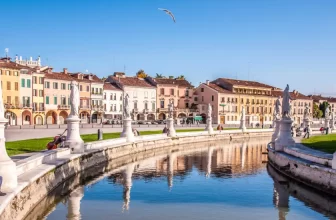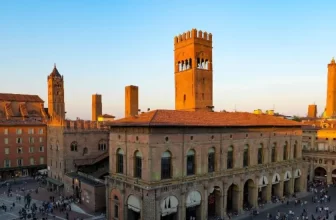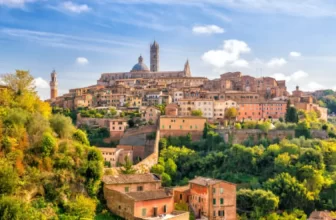Best Cities to Study and Live in Italy: Where Dreams Take Flight.
Study Guide Italy
Your complete resource on costs, universities, courses, scholarships, and life in Italy as an international student
Dreaming of studying in a country rich in history, unbeatable food, and world-class education? Then welcome, you’ve just landed on the ultimate Study Guide Italy.
Italy isn’t just about pasta, piazzas, and the Colosseum (though those are amazing, obviously). It’s one of Europe’s most historic hubs of learning, and a rising favorite among international students looking for a balance of academic excellence, vibrant lifestyle, and career potential.
This guide? It’s for you. the curious learner who wants honest insights, practical steps, and real reasons to fall in love with the idea of studying in Italy. Let’s begin.
Why Choose Italy for International Education?
There are plenty of countries where you can get a degree. So why choose Italy?
Well…
It’s affordable. Globally connected. Culturally electric.
Mix historic universities with innovative programs, English-taught degrees, and a lifestyle that feeds the soul (and your belly). Italy is an underrated powerhouse when it comes to international education.
- Public universities charge lower tuition fees compared to most of Europe and North America.
- Programs in English? Check, especially in business, tech, fashion, and sciences.
- Work opportunities? You bet. Italy is home to multinationals, luxury brands, startups, and more.
- And yep, it’s all wrapped in Roman ruins, Tuscan sunsets, and affordable coffee.
Top Universities in Italy for International Students
Let’s talk names. Prestige. Rankings. Opportunities. Italy has over 90 universities, and quite a few of them punch well above their weight globally.
Here are five worth your attention:
1. University of Bologna
- Oldest university in the West (founded in 1088)
- Known for humanities, law, political sciences, and more
- Strong Erasmus+ participation and global research hubs
2. Sapienza University of Rome
- One of Europe’s largest universities
- Wide range of English-taught postgraduate programs
- Strong student community in the heart of Italy’s capital
3. Politecnico di Milano
- Italy’s top tech-oriented university
- Specializes in engineering, architecture, and design
- High employability rankings and strong industry partnerships
4. Bocconi University (Milan)
- Elite business school in Europe
- Exceptional MBA, finance, economics, and data science programs
- Renowned for international student support and corporate ties
5. University of Padua
- Particularly strong in medicine, biology, and psychology
- Historic reputation with modern facilities
- Vibrant international campus with scholarships for non-EU students
Pro-tip: Many Italian universities participate in international consortia (like Erasmus Mundus), offering joint degrees and research opportunities worldwide.
Most Popular Courses in Italy
What are international students flocking to study in Italy? Here’s what’s trending, and why:
🎨 Art, Design & Fashion
You’re in the land of Gucci, Leonardo da Vinci, and Milan Fashion Week.
- World-class design schools like IED and Polimoda
- Courses focus on practical, portfolio-ready skills
- Strong links to Italy’s luxury and fashion industry
🏛️ Architecture & Engineering
Italy is a case study in historic and modern construction.
- Politecnico di Milano and Torino lead tech education
- Programs are research-intensive and globally accredited
🎓 Business, Economics & Finance
With centers like Milan, Rome, and Turin, Italy is a front-runner for globally-minded business students.
- Bocconi = business royalty
- English-taught MBAs and Masters in International Management are in high demand
👩⚕️ Medicine & Life Sciences
Some public universities offer 6-year MD programs in English (e.g., University of Pavia, Sapienza).
- Competitive admissions but well-priced
- Renowned for public health, surgery, biomedical sciences
💻 Data Science, AI & ICT
Italy is positioning itself as a tech-forward educational hub, especially in the EU’s digital economy push.
- Look out for specialized Masters with cutting-edge curriculum and research placements
Cost of Studying in Italy: What You’ll Spend
Let’s talk money, because studying abroad is an investment.
🎓 Tuition Fees
| Program Type | Public University | Private University |
|---|---|---|
| Undergraduate (per year) | €1,000 – €3,000 | €6,000 – €20,000 |
| Master’s/Postgrad | €1,500 – €4,000 | €8,000 – €25,000 |
| Medicine (6-year degree) | €500 – €4,000 | Varies widely |
Fees at public universities are often income-based, and non-EU students can sometimes access discounts depending on agreements with their home country or academic merit.
🏠 Living Costs
| Expense | Monthly Estimate |
|---|---|
| Rent (shared/student) | €300 – €600 |
| Food & Groceries | €150 – €300 |
| Transport | €25 – €40 (student pass) |
| Health Insurance | €150/year (approx.) |
| Misc. (books, leisure) | €50 – €100 |
💡 Tips to save: Live outside city centers, cook at home (pasta is cheap and delicious), bicycle over buses, and take advantage of student discounts.
🎓 Scholarships & Financial Aid Options
Looking for help covering your expenses? Italy offers numerous scholarships for international students, merit- and need-based.
Major Funding Sources:
- MAECI (Italian Government Scholarships)
For foreign students, includes tuition waiver and monthly allowance. - DSU (Region-based Scholarships)
Based on income; covers tuition, housing, meals. - University-specific aid
Institutions like Bocconi, Padua, and Politecnico offer partial to full tuition scholarships for qualified international students. - Erasmus+ Programs
Offers mobility grants, joint degrees, and internships across Europe.
🔎 Pro tip: Apply early, prepare financial documents, and have a compelling SOP. Many grants focus on both academic merit and financial need.
💼 Career Prospects After Graduation
So, what happens after your degree?
In short, good things. Italy allows:
- A stay-back visa of 12 months post-graduation for job hunting.
- Extensions if you gain a work permit or professional contract.
- High demand in sectors like:
- Engineering
- Hospitality & tourism
- Art restoration & design
- Pharmaceutical sciences
- Agri-tech and food innovation
Students from the EU have fewer restrictions, but non-EU graduates can also transition smoothly into working if they align with local talent needs.
📝 Essential Documents for Admission
Before applying, gather everything you’ll need. Italian universities require:
- High school diploma / Bachelor’s certificate (as applicable)
- Academic transcripts, translated to Italian or English
- Proof of English/Italian proficiency (IELTS, TOEFL, or CILS)
- Statement of Purpose (SOP)
- Letters of Recommendation
- Valid Passport
- University application form
- Pre-enrollment through Universitaly.it portal
Some programs may also ask for entrance exams or interviews, especially in medicine or design.
🛂 Student Visa Process for Italy
Here’s a friendly breakdown of the visa journey:
Step-by-Step Italian Student Visa Guide:
- Receive University Acceptance Letter
Applied? Got in? Congrats! That’s step one. - Register on Universitaly.it
Mandatory pre-approval system for all international students. - Prepare Required Documents
- Admission letter
- Proof of funds (~€6,000–€8,000/year)
- Valid passport
- Health insurance
- Clean criminal record (for some countries)
- Proof of accommodation
- Schedule an appointment at Italian Embassy/Consulate
Be on time and carry all originals + copies. - Attend interview (if required)
Some embassies require a brief chat. Just be honest and well-prepared. - Wait for visa processing (2–6 weeks)
Once approved, pack your bags!
🧾 Final Thoughts – Is Italy Your Dream Study Destination?
Let’s recap. This Study Guide Italy walked you through everything, from prestigious universities and top courses to tuition fees, scholarships, career options, and visa steps.
Italy has style, yes, but also serious academic substance. From art history lectures in Florence to engineering labs in Milan, it’s a country that balances old wisdom with modern opportunity.
So… what’s your next step?
A language course? Browsing university websites? Booking a call with a counselor?
Wherever you’re headed, buona fortuna! 🍀✨
❓Top 10 FAQs About Studying in Italy
1. Do I need IELTS to study in Italy?
Yes, if your program is in English. Some universities accept Duolingo or TOEFL as alternatives.
2. How much does it cost to study in Italy per year?
Total average: €7,000 – €12,000 (tuition + living).
3. Are scholarships available?
Yes. Government, regional, and university-specific scholarships are open to international students.
4. Can I work while studying in Italy?
Yes. Up to 20 hours/week part-time during semesters, and full-time during breaks.
5. Are degrees taught in English?
Absolutely. Especially at the Master’s level in business, engineering, and science fields.
6. What is the stay-back policy?
Non-EU students can stay up to 12 months post-grad to find work.
7. What’s the best city for international students?
Milan, Rome, Bologna, and Florence are top choices for diversity, affordability, and opportunities.
8. Is health insurance mandatory?
Yes. About €150/year for students. Required for visa application.
9. When should I apply?
Between November and March for most programs starting in Fall.
10. Do I need to speak Italian?
No for English-taught programs, but learning Italian helps with daily life and internships!






